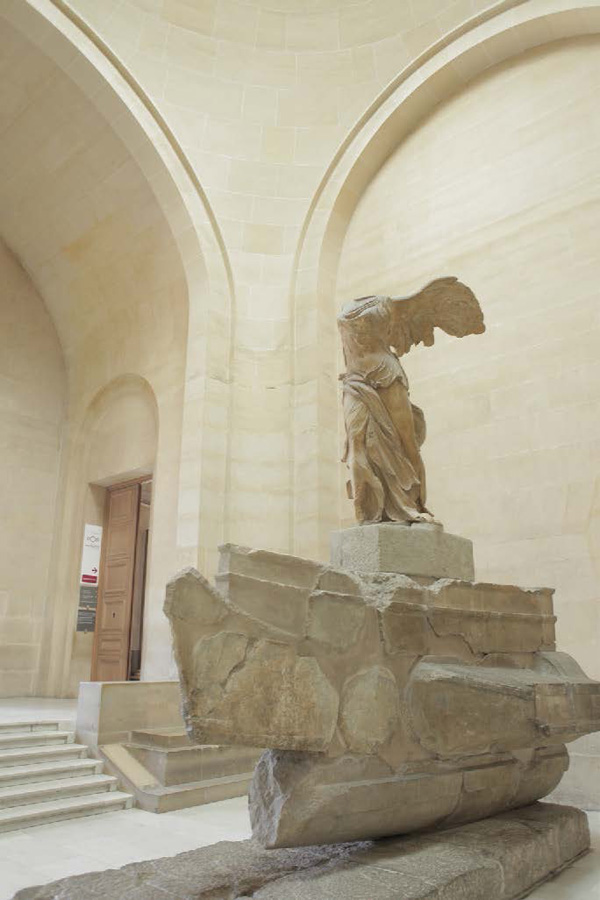Gramercy Park Studios worked with film and installation artist Mark 
Lewis to deliver VFX and virtual camera moves for scenes inside the
Louvre Museum in Paris in his film ‘Invention’.
Gramercy Park Studios Takes Flight through the Louvre Museum |
| Gramercy Park Studios worked with Canadian film and installation artist Mark Lewis to deliver the visual effects and virtual camera moves for scenes inside the Louvre Museum in Paris in his recent film ‘Invention’. |
 |
|
Sequences at the Louvre, in particular, elaborate on the possibilities of camera moves, including swooping, twisting and flying, to give the museum character and storytelling potential. Gramercy Park Studios contributed unusual VFX and point cloud imagery to enhance the scenes with elegant, extreme camera work. |
 |
New Perspectives“Recreating the famous Louvre Museum was a challenging and engaging project from both an artistic and technical point of view,” said Francisco Lima, VFX Technology Supervisor at Gramercy Park Studios. “The beautiful results we achieved meant pushing the boundaries of our workflow to achieve new dimensions and angles the director wanted, within the digital environment. Watching ‘Invention’ really does make viewers feel like they’re inside the Louvre, and experience it from a perspective that would not be possible otherwise.” To achieve Mark’s vision of blending a live action shoot and virtual environments, Gramercy Park Studios’ work involved techniques in image acquisition, geometry extraction, 3D modelling and digital paint. "The initial step was technical previs, based on architectural plans of the Louvre and photographs from a location scout Mark and our team undertook, walking around the areas that he was thinking of using for his film,” said Francisco. |
 |
|
Virtual ShootingAs well as movement and speed, the previs helped him choose which camera rigs and lenses to deploy during the live action shoot. “He decided on the RED Epic early on, so we were able to configure our previs camera to match the RED Epic. That way, whatever lens we selected in previs, would match what he would see when shooting the live action. |
 |
 |
|
Inside the LouvreDuring the next phase, the Gramercy Park team visited Paris several times to carry out a thorough photographic capture of the two selected interiors. “We planned a one-day shoot in each room, and used several Canon 5D MkIII cameras for the task,” said Francisco. “Because we were going to build the ceiling of the second room entirely in CGI, Aviv Yaron joined us and conducted a special photoshoot of the ceiling with panoramic equipment, including a panoramic head. Yaron is one of the most experienced VFX/CGI photographers I’ve ever met and works with his own gear. |
 |
 |
|
Calibration & Point Cloud GenerationFrom the photography, high resolution textures and geometry were extracted using a photogrammetry workflow in which, back at Gramercy Park Studios’ London facility, the hundreds of photos were calibrated within the virtual space used Photoscan from Agisoft. This involved finding the exact position in 3D space from which each photo was taken in the Louvre. From this extensive calibration, the team were able to extract a base geometry and point cloud from which detailed and precise 3D models were created. Extracted digital textures were then mapped, edited, digitally enhanced and re-projected onto the 3D models. |
 |
|
“The second room, which we re-created in CG, has an amazing, detailed ceiling. the same process as the one we used for the statue was used to, again, create a production-ready 3D mesh for the ceiling details and the eagles. The images here show all of the calibrated cameras and the resulting 3D mesh, and a textured version. It’s not the final version, but it gives a clear idea of the quality we were able to get from the excellent photos that Aviv had taken.” |
 |
Matching the Live ActionFollowing sculpting in Mudbox, their CG pipeline consisted of modelling in Maya and texturing with MARI, rendered in V-Ray. Compositing was completed in Nuke X. To make the transition between the live action footage and the digital environment invisible, Gramercy Park blended the real and the virtual. Based on the geometry of the interior they had captured and digitised, the team recreated the camera move featured in the live action footage digitally in order to blend it with the digital camera, approaching the transition as a matchmove using PFTrack. The result is balanced between both environments and accurately portrays the kind of voyage Mark wanted to take inside these detailed spaces. The film ‘Invention’ made its world debut at the Toronto Film Festival in September, and has also been shown at the BFI London Film Festival. www.gramercyparkstudios.com Words: Adriene Hurst |


















